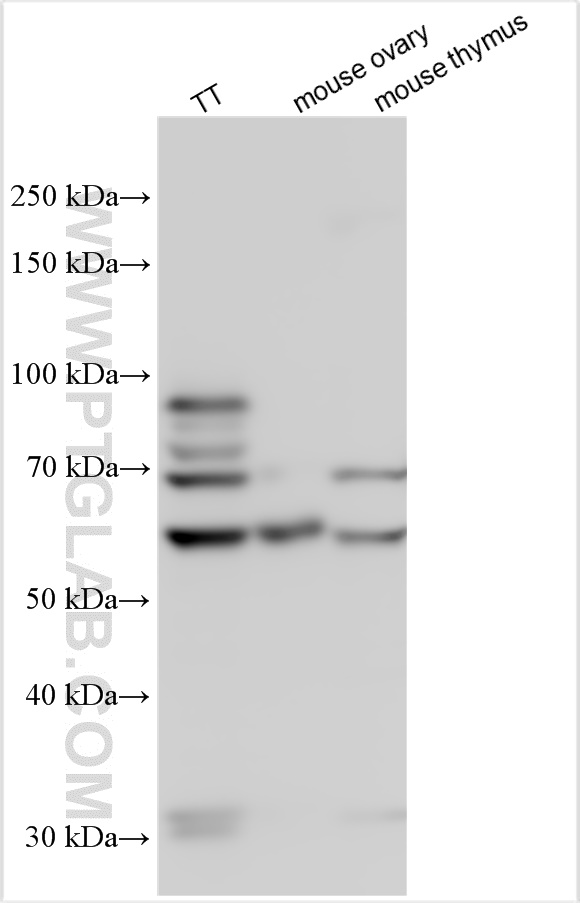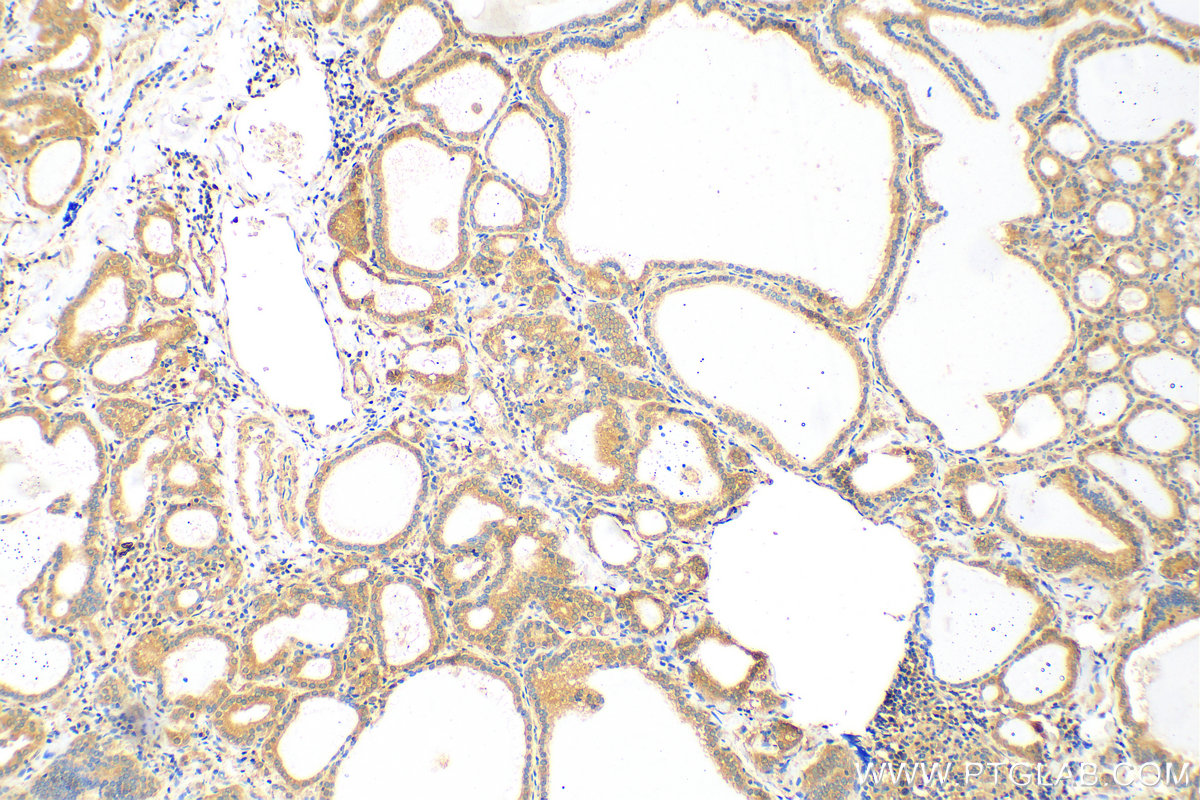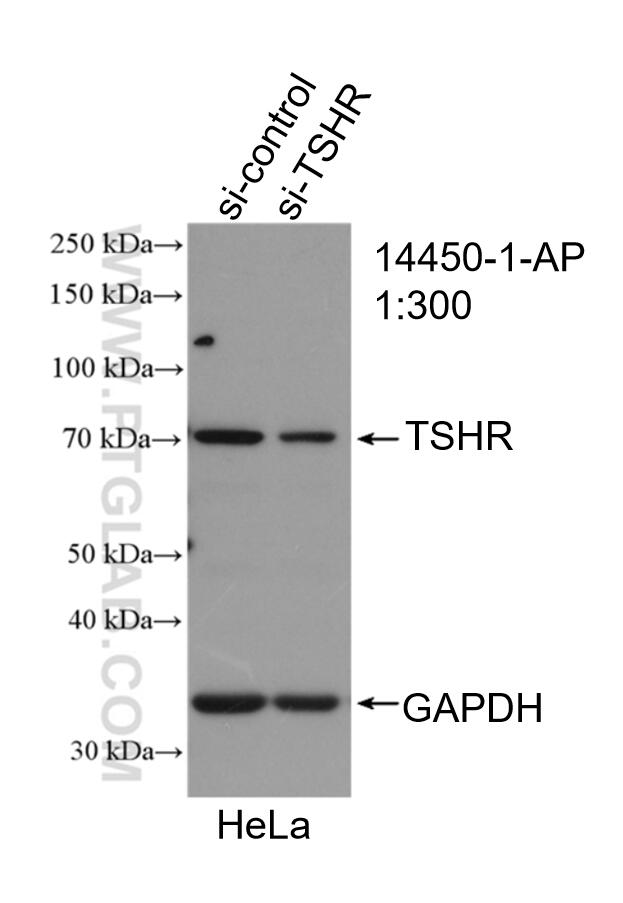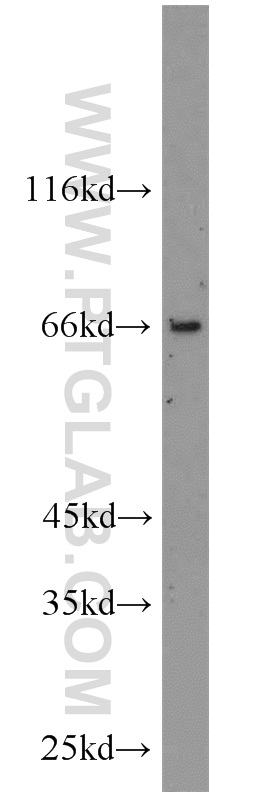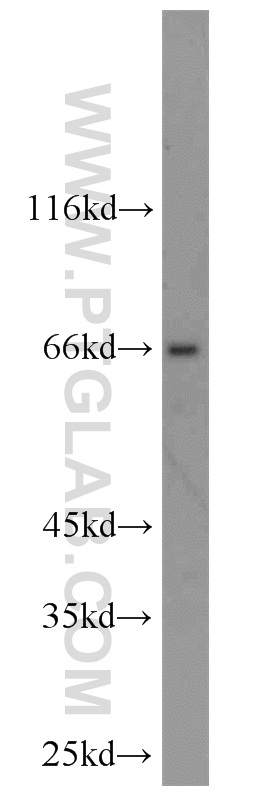验证数据展示
经过测试的应用
| Positive WB detected in | TT cells, HeLa cells, mouse ovary tissue, mouse thymus tissue |
| Positive IHC detected in | human thyroid cancer tissue Note: suggested antigen retrieval with TE buffer pH 9.0; (*) Alternatively, antigen retrieval may be performed with citrate buffer pH 6.0 |
推荐稀释比
| Application | Dilution |
|---|---|
| Western Blot (WB) | WB : 1:500-1:1000 |
| Immunohistochemistry (IHC) | IHC : 1:50-1:500 |
| It is recommended that this reagent should be titrated in each testing system to obtain optimal results. | |
| Sample-dependent, Check data in validation data gallery. | |
产品信息
14450-1-AP targets TSHR in WB, IHC, IF, ELISA applications and shows reactivity with human, mouse, rat samples.
| Tested Applications | WB, IHC, ELISA Application Description |
| Cited Applications | WB, IHC, IF |
| Tested Reactivity | human, mouse, rat |
| Cited Reactivity | human, mouse, zebrafish |
| Immunogen | TSHR fusion protein Ag5957 种属同源性预测 |
| Host / Isotype | Rabbit / IgG |
| Class | Polyclonal |
| Type | Antibody |
| Full Name | thyroid stimulating hormone receptor |
| Synonyms | TSH R, Thyrotropin receptor, Thyroid-stimulating hormone receptor, LGR3, hTSHR I |
| Calculated Molecular Weight | 87 kDa |
| Observed Molecular Weight | 87kDa, 62-70kDa, 28-30kDa |
| GenBank Accession Number | BC063613 |
| Gene Symbol | TSHR |
| Gene ID (NCBI) | 7253 |
| RRID | AB_2208263 |
| Conjugate | Unconjugated |
| Form | Liquid |
| Purification Method | Antigen affinity purification |
| UNIPROT ID | P16473 |
| Storage Buffer | PBS with 0.02% sodium azide and 50% glycerol pH 7.3. |
| Storage Conditions | Store at -20°C. Stable for one year after shipment. Aliquoting is unnecessary for -20oC storage. |
背景介绍
Thyroid stimulating hormone (also known as thyrotropin or TSH) is a glycoprotein hormone produced by thyrotrophs in the anterior pituitary gland. The TSH receptor (TSHR), mainly expressed on the thyroid epithelial cells, is a G protein-coupled receptor (GPCR) of the seven-transmembrane domain family and plays a central role in controlling thyroid cell metabolism. The gene of TSHR maps to chromosome 14q31.1, and encodes a 764-amino acid protein with a predicted unmodified molecular weight of 86.8 kDa. The apparent molecular weight of glycosylated form is 95-120 kDa. Studies reveal that TSHR is composed of two subunits, A and B, which are produced by cleavage of single-chain TSHR on the cell surface and subsequently connected by disulfide bonds. This rabbit polyclonal antibody raised against N-terminal region (1-253 aa) of human TSHR can detect glycosylated subunit A with an experimentally determined molecular weight of 62-70 kDa under reducing condition. (PMID: 20578897, 17158770, 12593718)
实验方案
| Product Specific Protocols | |
|---|---|
| WB protocol for TSHR antibody 14450-1-AP | Download protocol |
| IHC protocol for TSHR antibody 14450-1-AP | Download protocol |
| Standard Protocols | |
|---|---|
| Click here to view our Standard Protocols |
发表文章
| Species | Application | Title |
|---|---|---|
Theranostics Obatoclax and LY3009120 Efficiently Overcome Vemurafenib Resistance in Differentiated Thyroid Cancer. | ||
Int J Nanomedicine A TSHR-Targeting Aptamer in Monocytes Correlating with Clinical Activity in TAO | ||
Oxid Med Cell Longev TSH Combined with TSHR Aggravates Diabetic Peripheral Neuropathy by Promoting Oxidative Stress and Apoptosis in Schwann Cells. | ||
Environ Pollut Acute exposure of zebrafish embryo (Danio rerio) to flutolanil reveals its developmental mechanism of toxicity via disrupting the thyroid system and metabolism. | ||
Cancers (Basel) Patient-Derived Papillary Thyroid Cancer Organoids for Radioactive Iodine Refractory Screening. | ||
Front Endocrinol (Lausanne) Long Non-coding Antisense RNA TNRC6C-AS1 Is Activated in Papillary Thyroid Cancer and Promotes Cancer Progression by Suppressing TNRC6C Expression. |
